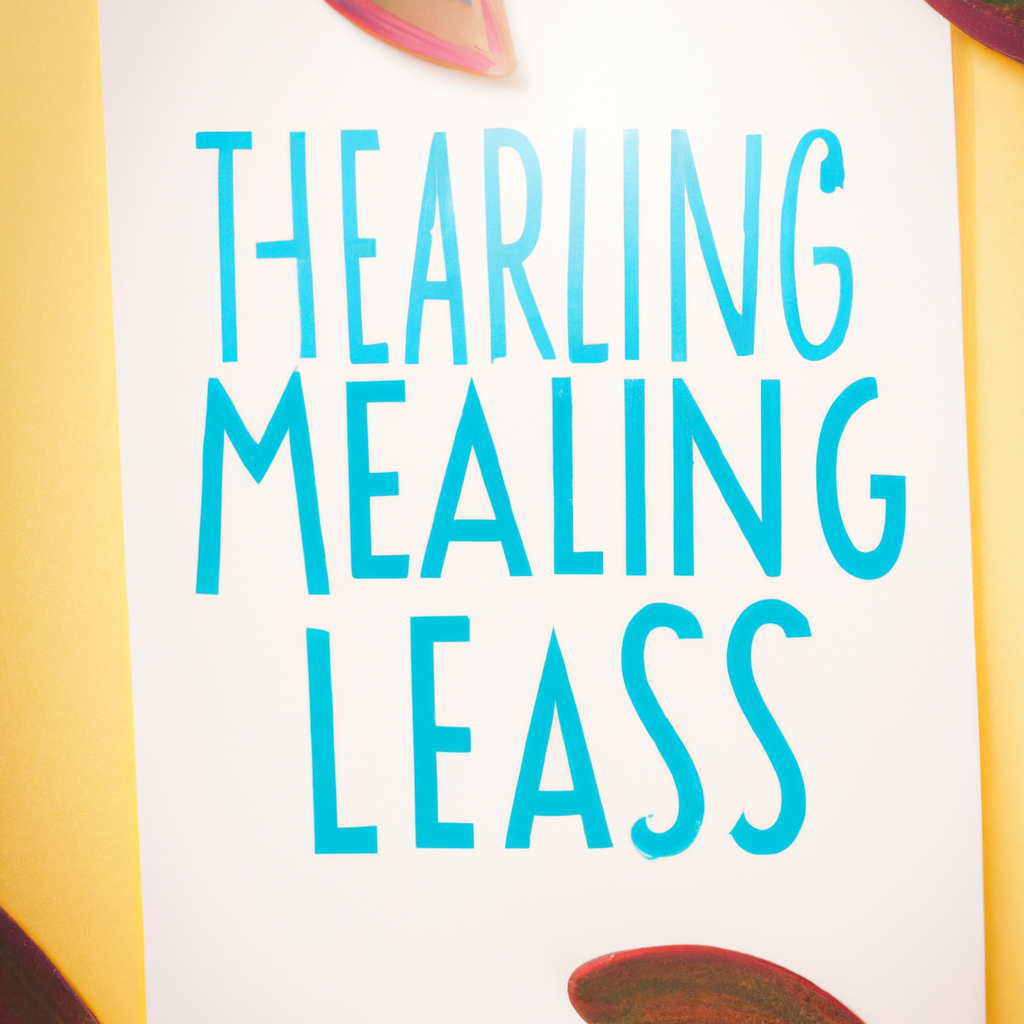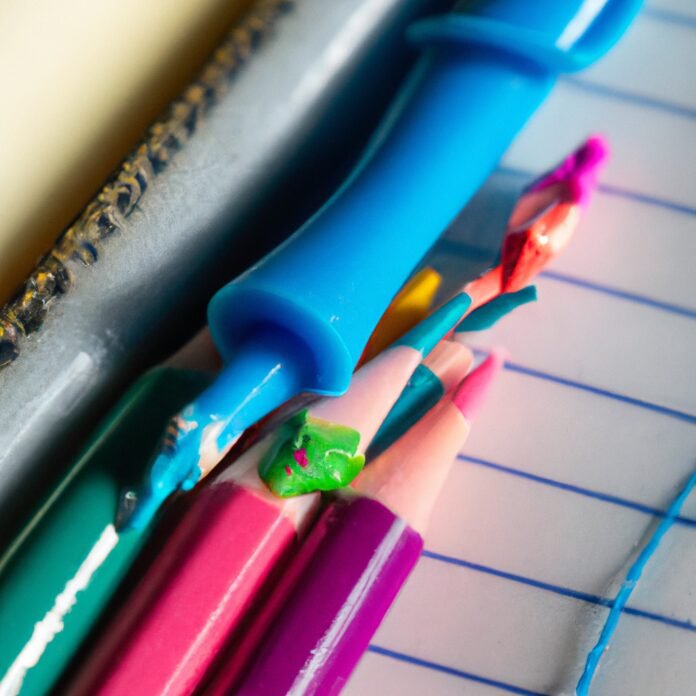Is your way of life starting to feel a bit dull and monotonous? Is there something missing from your life that you can’t quite put your finger on? Consider tapping into the transformative power of creative expression. Art, music, and creativity can be incredibly powerful vehicles for healing, offering insight into our inner workings and fueling personal growth. Read on to learn how you can explore these expressive tools and embark on a journey of self-improvement.
1. Unpacking the Healing Potential of Art and Music
Creating and engaging with art and music can provide us with unique and powerful therapeutic experiences. Whether it’s taking a few moments for an impromptu doodle, or jamming out to a favorite song, art and music can bring us joy and a sense of connection. Here is just a few ways to tap into the healing potential of art and music:
- Expand Awareness: Bringing yourself to the creative moment can be a grounding experience as it can allow you to step back and become aware and reflective. Taking this awareness to your art and music creation can be an excellent way to express thoughts and feelings.
- Engage the Body:Historically, art and music have been used in various religious and healing rituals for many cultures. Practicing art and music can connect us to our inner and outer worlds, open our hearts and bring us back to the present moment.
Exploring and combining art mediums and musical modalities can foster powerful moments of alchemizing, allowing for self-expression and healing. Simple Private Art Music (SPAM) is one form of creative therapy. It incorporates improvisational music combined with visual art and meditation techniques. It encourages free form and creative flow during practice. By providing structure and openness, the individual can move the creative pieces around for optimum healing.
Exploring one’s relationship to art and music can be the basis of a powerful healing journey. Whether you want to occupy yourself in creative self-expression or simply enjoy art and music from a distance, diving into the ranging possibilities of the creative process can help in finding balance with mind, body, and spirit.

2. Exploring the Creative Basis of Self-Healing
It is no secret that our mind plays an integral role in our healing process. Though the basis of this relationship is not always clear to us, it is important to explore the creative basis for self-healing. Exploring our artistic side can open the door to a range of resources for healing.
The creative basis of self-healing can be found in various forms. Writing can be an effective way to express and explore our thoughts, feelings, and emotions in a way that is healing. By recording these thoughts, we can become aware of them and how they affect our healing journey.
Singing, playing music, and making art also have an effect on our self-healing. Making music can be an outlet for our emotions and can also bring comfort. Art can create a space for us to express our pains and fears. It can provide an immersive experience that allows us to reconnect with ourselves.
Creative meditation is another way to explore the creative basis of self-healing. It can help us to let go of anxiety, to relax our minds, and to be present in the moment. This process can also be used as a tool to become more in touch with our inner self and to discover our unique healing capabilities.
While these activities have been long practiced, it is important to remember that the creative basis of self-healing is individual and unique for each of us. It can take time to explore different methods and to find our own authentic healing process. The following are some ideas that can help in this exploration:
- Practice gratitude and self-care
- Find movement that resonates with you
- Journal about things that bring comfort and sustenance
- Immerse yourself in art
- Dance to express your emotions
- Create with your hands
These are just a few of the many ways we can explore the creative basis of self-healing. With patience and dedication, we can open our hearts and minds to discover how creativity contributes to our own healing journey.
3. Discovering the Medicinal Melody of Music
Music has been used since early antiquity as a remedy for health issues — from traumatic depression to rhythmic surgery — and its power has been appreciated in all cultures. Whether it is used to cure physical ailments or to improve mental health, the use of music as a medicinal tool is undeniable.
The connection between music and medical care has been proven through numerous studies and observations over the years. Many experts believe that because music directly impacts the brain, it can produce a wide variety of medical effects.
For example, soft, slow melodies can generate a calming effect in the body that helps reduce anxiety and stress levels. On the other hand, upbeat and invigorating songs can increase energy and help those dealing with fatigue. Focusing on the lyrics of certain songs can also have a psychological effect — calming the nerves during a difficult situation or lifting the mood when feeling down.
To get the best medicinal effects, it is important to choose the right kind of music. Ideally, it should be relaxing and easy to listen to with lyrics that have meaning. Music therapy has been found to be effective for treating mental health conditions such as anxiety and depression, as well as physical illnesses such as chronic pain. Listening to the right music can also aid in physical rehabilitation and improve cognitive functioning.
In addition to its physical benefits, music has the potential to offer emotional benefits. It can provide a sense of connection and belonging to those who are feeling isolated, and it can help to guide self-reflection. Listening to music can be a powerful tool for healing — providing comfort, joy, and inspiration in times of need.
- Music has been used since early antiquity to help treat physical and mental ailments.
- It is important to choose the right kind of music to get the best medicinal effects.
- Music therapy has been found to be effective in treating mental health conditions and physical illnesses.
- It can also provide emotional benefits and be used as a powerful tool for healing.
4. Nurturing Your Creative Expression for Well-Being
Nurturing creativity can have a hugely positive effect on well-being. Creative activities can foster a sense of meaning and purpose, inspire problem solving and innovation, resulting in improved mental health. Here are some ways to nurture your creative expression.
1. Stretch your comfort zone – Create activities or tasks that challenge your creative abilities and push you to try something new. This could be as simple as painting a landscape instead of a still life, or working with a color palette outside of your comfort zone. Don’t get too attached to the outcome, have fun and enjoy the journey.
2. Set aside creative time – Dedicate yourself to a creative activity plan and set aside specific creative time each week. This allows your creative time to become an expectation and a regular part of your routine.
3. Find a creative community – Socializing and participating in group creative activities with friends or finding an online group of creators to collaborate with. The exchange of ideas and encouragement can be a great asset in fostering creative expression.
4. Experiment with different art forms – You don’t need to have a lengthy commitment to one form of creativity. Try a little bit of everything and don’t be afraid to mix it up.
5. Stay inspired – Keep a memory book of things that inspire you, follow creative accounts on social media or youtube to help you stay motivated. There is no limit to the sources of inspiration that you can tap into.
Nurturing creative expression can bring simple pleasures throughout your life. Being creative can help you express and manage stress, overcome challenges, discover new meaning and cultivate a unique and powerful sense of well-being.
Letting go and embracing the healing power of creative expression is the foundation for growth and embracing the power of the now. Each of us has a unique way of expressing ourselves and we can use art and music as pathways for connection and transformation. Our creative expressions are part of the broader narrative of the healing journey. By creating, listening and connecting with the world, we can find peace, joy and resilience—a reminder that we are in this together.

